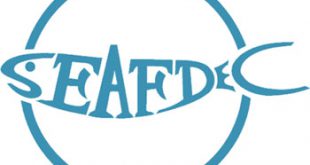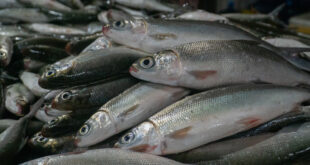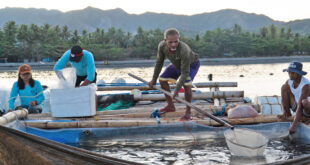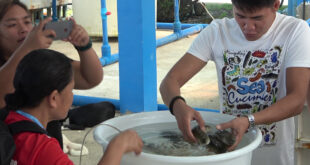| Virus expected to cost Australian abalone industry |
| A herpes-like virus in wild and farmed abalone stocks are wreaking havoc, which could cost the abalone industry in south-west Victoria in Australia up to $5 million in losses this season. |
| The virus responsible for ganglioneuritis, as reported here, is believed to have come from an aquaculture facility in Portland, moving east. Ganglioneuritis causes inflammation of abalone nervous tissue, resulting in curling of the foot and swelling of the mouth.
Stakeholders are not very optimistic in their outlook about the situation; divers, such as Peter Riddle, are angry at the State Government’s handling. He thought that it is “too late” to do anything now, “the disease is in the ocean and I don’t think we’ve got any way” of stopping this threat. |
|
“It’s half my income now and what we worry about is the following years, whether we are going to survive,” he said. Fisheries Victoria says it is ensuring stocks are fished sustainably. It says it closed the Portland facility when it was alerted to the outbreak to try to contain the disease. Actions were taken to control the disease, which include the disinfection and decontamination of abalone farms. Biosecurity protocols for the recreational, commercial and aquaculture sectors were also developed. Abalone is the basis of Victoria’s most valuable commercial fishery with a landed value in excess of $60 million per year in the last two years, according to Victoria’s Department of Primary Industries. |
| Considering that the Philippines is not that far away from Australia is enough reason for the industry to be concerned. |
| Sources: http://www.abc.net.au/news/newsitems/200702/s1842308.htm, February 7, 2007. 2:48pm (AEDT) http://www.dpi.vic.gov.au, January 23, 2007. |
Check Also
Sea cucumber hatchery technicians upskilled to solve a production bottleneck
SEAFDEC/AQD co-organized an “On-site Training in Using Concentrated Microalgae in Larval Rearing of Sandfish Holothuria scabra” attended by 18 trainees from various hatcheries in Eastern Visayas.
 SEAFDEC/AQD Southeast Asian Fisheries Development Center | Aquaculture Department
SEAFDEC/AQD Southeast Asian Fisheries Development Center | Aquaculture Department



